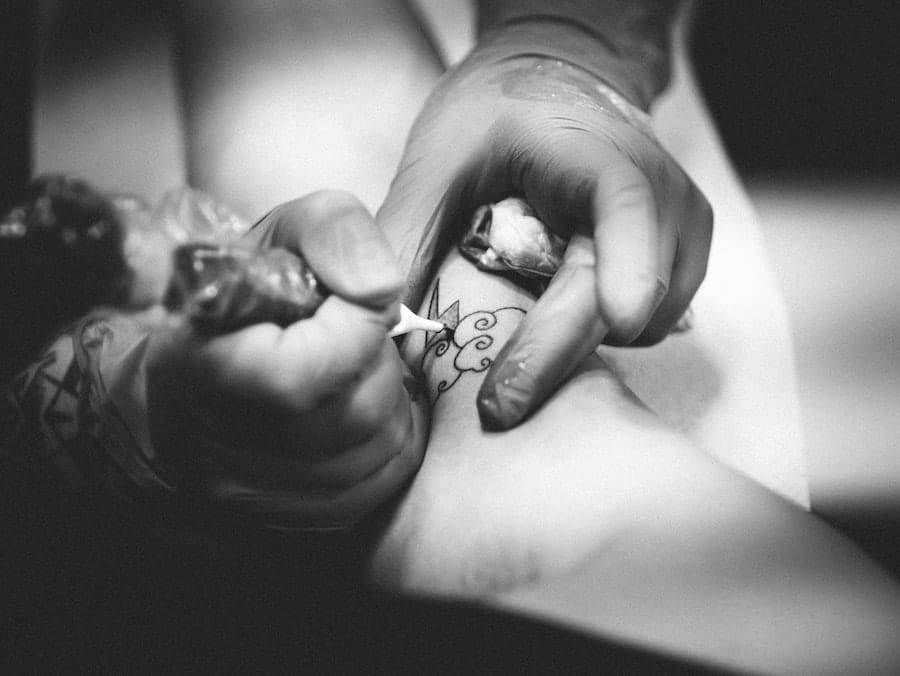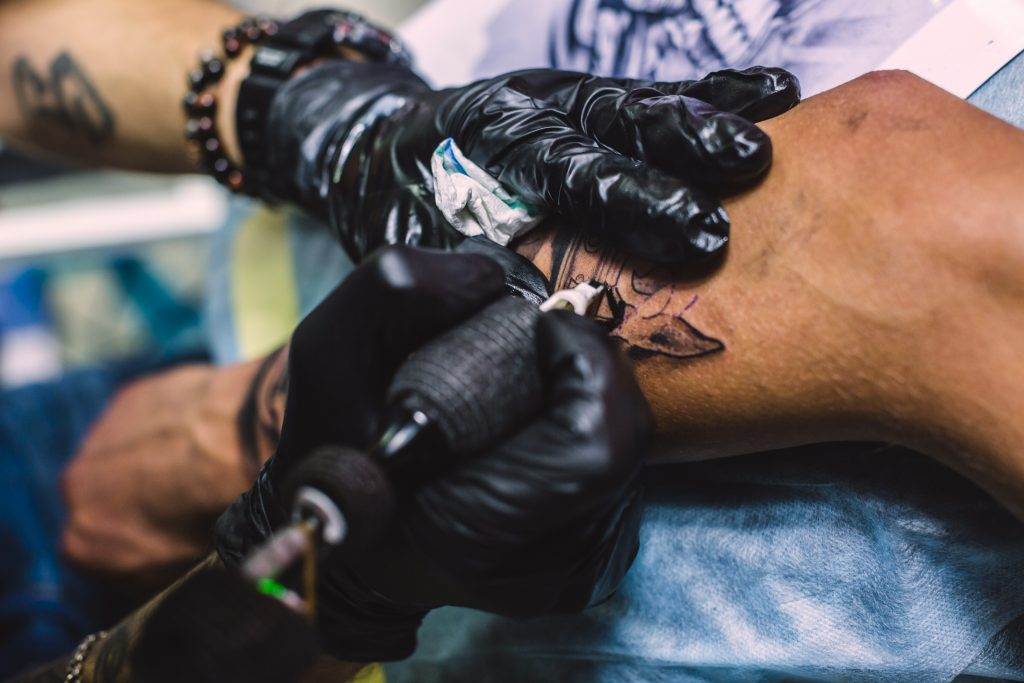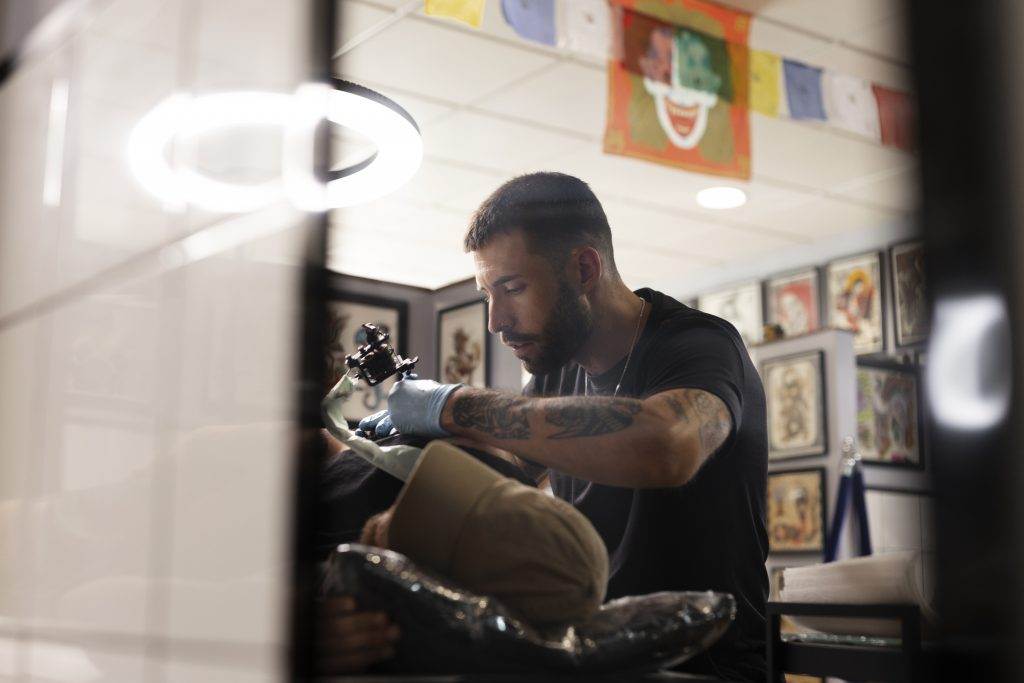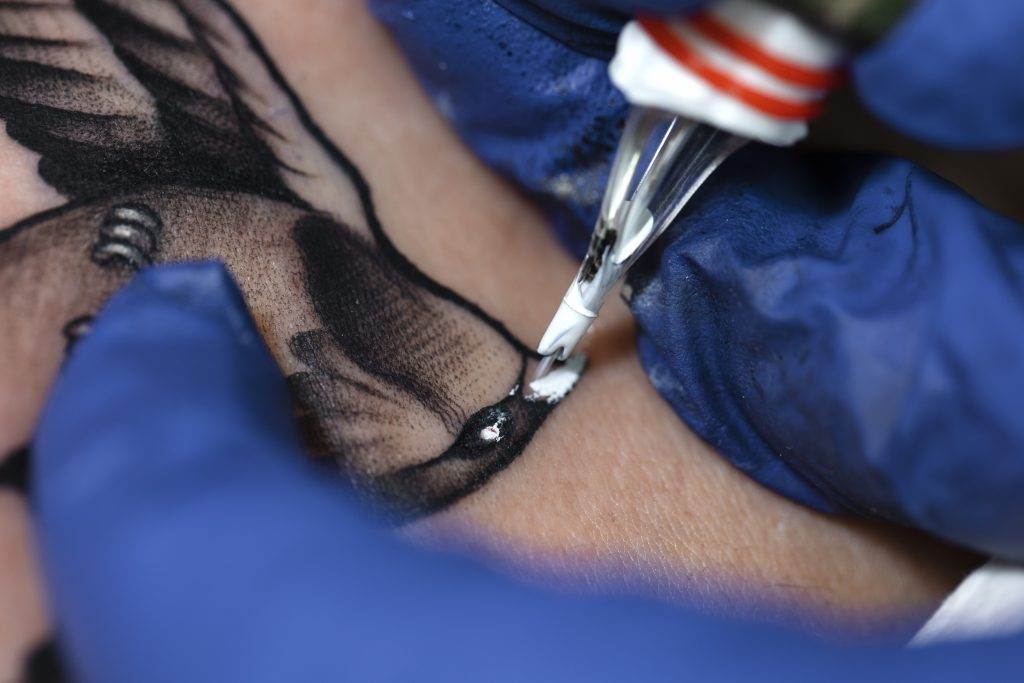Tattoos have become increasingly popular in recent years, with more and more people choosing to adorn their bodies with beautiful and meaningful artwork. However, getting a tattoo is not just about the design itself; it also requires proper care and maintenance to ensure that the ink stays vibrant and the tattoo remains in good condition for years to come. Taking care of your tattoo is essential for maintaining its quality and longevity.
Proper tattoo care starts from the moment you leave the tattoo studio. Your tattoo artist will provide you with aftercare instructions that you should follow diligently. These instructions are designed to help your tattoo heal properly and minimize the risk of infection or other complications. By following these instructions and taking care of your tattoo, you can ensure that it looks its best for years to come.
Understanding the Healing Process
After getting a tattoo, your skin goes through a healing process that typically takes about two to four weeks. During this time, it is important to understand what to expect and how to properly care for your tattoo. The healing process can be divided into several stages.
The first stage is the initial healing stage, which lasts for about one to two weeks. During this time, your tattoo will be red, swollen, and may ooze a clear or yellowish fluid. It is important to keep the area clean and dry, avoiding any excessive moisture or friction. Your tattoo artist will provide you with specific instructions on how to clean and care for your tattoo during this stage.
The second stage is the peeling or flaking stage, which typically occurs around the second week after getting a tattoo. Your tattoo may start to peel or flake off, similar to a sunburn. It is important not to pick at or scratch your tattoo during this stage, as it can cause scarring or damage to the ink. Instead, keep the area moisturized and let the skin naturally shed.
The final stage is the fully healed stage, which occurs around four weeks after getting a tattoo. At this point, your tattoo should be fully healed and the skin should be smooth and free of any scabs or flakes. However, it is still important to continue taking care of your tattoo to maintain its quality and longevity.
Cleaning Your Tattoo
Properly cleaning your tattoo is crucial for preventing infection and promoting healing. It is important to clean your tattoo gently and avoid using harsh products that can irritate the skin or fade the ink.
To clean your tattoo, start by washing your hands thoroughly with antibacterial soap. Then, gently wash the tattoo with lukewarm water and a mild, fragrance-free soap. Avoid scrubbing or rubbing the tattoo, as this can cause irritation or damage to the ink. Rinse the tattoo thoroughly with clean water and pat it dry with a clean towel or paper towel.
After cleaning your tattoo, apply a thin layer of an antibacterial ointment or a specialized tattoo aftercare product recommended by your tattoo artist. This will help keep the area moisturized and protect it from bacteria. Avoid using petroleum-based products or heavy creams, as they can clog pores and prevent proper healing.
It is important to clean your tattoo at least twice a day, or as instructed by your tattoo artist, until it is fully healed. During the healing process, avoid swimming, soaking in hot tubs or saunas, and exposing your tattoo to excessive moisture.
Moisturizing Your Tattoo

Keeping your tattoo moisturized is essential for preventing dryness and promoting healing. Dry skin can cause itching and discomfort, and may lead to scabbing or peeling that can damage the ink.
Choose a moisturizer that is specifically formulated for tattoos or one that is fragrance-free and gentle on the skin. Avoid using products that contain alcohol, fragrances, or other harsh ingredients that can irritate the skin or fade the ink. Apply a thin layer of moisturizer to your tattoo after cleaning it, and reapply as needed throughout the day to keep the area hydrated.
It is important not to over-moisturize your tattoo, as this can prevent proper healing. Apply just enough moisturizer to keep the skin hydrated, but not so much that it feels greasy or sticky. If you notice any excessive redness, swelling, or oozing, consult your tattoo artist or a healthcare professional, as this may be a sign of infection.
Avoiding Sun Damage
Exposing your new tattoo to the sun can cause the ink to fade and the colors to dull over time. UV rays can also damage the skin and increase the risk of skin cancer. It is important to protect your tattoo from the sun to maintain its vibrancy and longevity.
One of the best ways to protect your tattoo from the sun is by applying sunscreen. Choose a broad-spectrum sunscreen with a high SPF and apply it generously to your tattoo before going outside. Reapply sunscreen every two hours or after swimming or sweating.
In addition to sunscreen, you can also protect your tattoo by wearing protective clothing. Opt for lightweight, breathable fabrics that cover your tattoo and provide UPF (Ultraviolet Protection Factor) to block out harmful UV rays. Long-sleeved shirts, wide-brimmed hats, and sunglasses can all help protect your tattoo from sun damage.
Clothing and Tattoo Care
The clothing you wear can have an impact on the healing process of your tattoo. It is important to choose clothing that is comfortable and allows your tattoo to breathe, while also protecting it from irritation or friction.
Avoid wearing tight or restrictive clothing that can rub against your tattoo and cause irritation or damage to the ink. Opt for loose-fitting clothing made from soft, breathable fabrics like cotton or bamboo. These fabrics are less likely to cause friction against your tattoo and allow air to circulate, promoting healing.
If your tattoo is in an area that is prone to rubbing against clothing, such as the waistline or underwire of a bra, consider covering it with a non-stick dressing or a clean, breathable bandage. This will help protect your tattoo from irritation and allow it to heal properly.
Exercise and Tattoo Care
Exercise is an important part of a healthy lifestyle, but it is important to take precautions when exercising with a new tattoo. Vigorous exercise can cause excessive sweating, friction, and irritation that can damage the ink or delay the healing process.
Avoid exercising for at least 48 hours after getting a tattoo to allow the skin to heal. Once you are ready to resume exercise, choose activities that minimize friction and avoid excessive sweating. For example, opt for low-impact exercises like walking or yoga instead of high-impact activities like running or weightlifting.
If your tattoo is in an area that is prone to rubbing against clothing or equipment, consider covering it with a non-stick dressing or a clean, breathable bandage. This will help protect your tattoo from friction and irritation during exercise. After exercising, make sure to clean and moisturize your tattoo as instructed by your tattoo artist.
Swimming and Tattoo Care
Swimming can be refreshing and enjoyable, but it is important to take precautions when swimming with a new tattoo. Chlorine and saltwater can irritate the skin and cause the ink to fade or blur. In addition, swimming in pools or bodies of water that are not properly maintained can increase the risk of infection.
Avoid swimming for at least two weeks after getting a tattoo, or until it is fully healed. During this time, keep your tattoo dry and avoid exposing it to excessive moisture. If you must swim before your tattoo is fully healed, consider covering it with a waterproof bandage or a clean, breathable dressing to protect it from water.
After swimming, make sure to clean your tattoo thoroughly with lukewarm water and a mild, fragrance-free soap. Rinse the tattoo well to remove any chlorine or saltwater residue, and pat it dry with a clean towel or paper towel. Apply a thin layer of moisturizer to keep the area hydrated and promote healing.
Touch-Ups and Maintenance
Even with proper care, tattoos can fade or lose their vibrancy over time. Touch-ups and maintenance are important for keeping your tattoo looking fresh and vibrant.
Touch-ups involve going back to your tattoo artist to have certain areas of your tattoo re-inked or refreshed. This is typically done after the initial healing process is complete, usually around four weeks after getting a tattoo. Touch-ups can help restore any areas that may have faded or blurred during the healing process.
In addition to touch-ups, it is important to maintain your tattoo by keeping it moisturized and protected from the sun. Avoid picking at scabs or flakes, as this can cause scarring or damage to the ink. Instead, let the skin naturally shed and continue to follow proper aftercare instructions provided by your tattoo artist.

Tattoo Removal
While tattoos are meant to be permanent, there may come a time when you want to remove or modify an existing tattoo. Tattoo removal options include laser removal, surgical excision, and dermabrasion. However, it is important to note that tattoo removal can be expensive, time-consuming, and may not always be successful.
Laser removal is the most common method of tattoo removal. It involves using laser technology to break down the ink particles in the skin, allowing them to be naturally eliminated by the body’s immune system. Multiple sessions are usually required for complete removal, and there may be some scarring or skin discoloration.
Surgical excision involves surgically removing the tattooed skin and stitching the surrounding skin together. This method is typically used for small tattoos and may leave a scar. Dermabrasion involves using a high-speed rotary device to remove the top layers of the skin, along with the tattoo ink. This method can be painful and may also leave a scar.
It is important to consult with a qualified dermatologist or tattoo removal specialist before undergoing any tattoo removal procedure. They can assess your tattoo and recommend the best course of action based on factors such as the size, color, and location of the tattoo, as well as your skin type and overall health.
Proper tattoo care is essential for maintaining the quality and longevity of your ink. By understanding the healing process, cleaning and moisturizing your tattoo, protecting it from the sun, choosing the right clothing for tattoo care, and taking precautions during exercise and swimming, you can ensure that your tattoo looks its best for years to come.
Remember to follow aftercare instructions provided by your tattoo artist and consult with them if you have any concerns or questions about caring for your tattoo. Taking care of your tattoo is a lifelong commitment, but with proper care and maintenance, you can enjoy your beautiful artwork for years to come.



